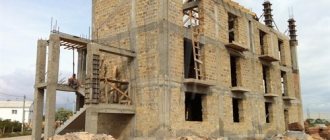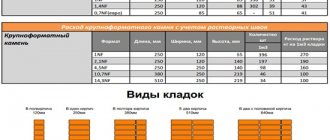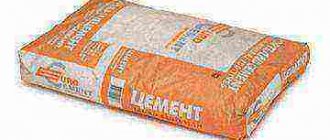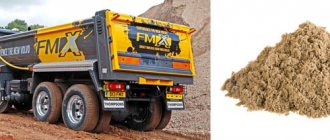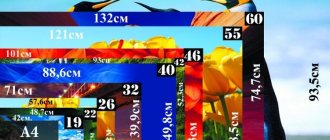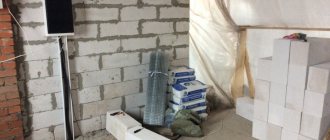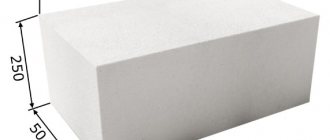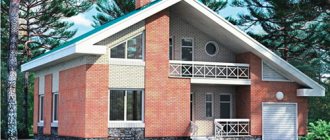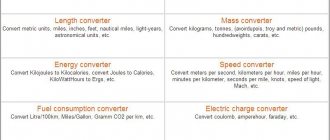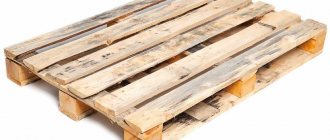For large construction projects, purchasing, selecting and calculating the cost of building materials can take several days. It is quite simple to calculate the required number of m3 of lining required to complete all internal work. However, the question arises when purchasing in bulk: how much lining is in a cube?
Several important values when calculating may depend on the volume of goods:
- Price of materials;
- Cost of delivery;
- Calculation of paints and consumables, fasteners.
- For different types of boards, the price will, accordingly, vary significantly. The cost of the lining depends on:
- Type of material, grade;
- Raw materials for manufacturing;
- Dimensions of the lamella (width, height, thickness).
From here, calculating the total volume of the lining allows you to estimate the total price of the material.
Simple formula
To find out how much wooden lining there is in 1 m3, use a simple formula:
1/(lamella width*thickness*length). The resulting result is rounded to 1 unit (always upward).
Example for a wooden board with dimensions 150x25x2000 mm:
1/(0.15x0.025x2)=1/0.0072=133.3 = 134 pcs.
Similar calculations can be made with different types of lamellas to determine the exact amount of finishing material and calculate its approximate cost. So, knowing the price per m3, you can find out the price of one board:
Price per m3/number of boards.
Example for a board of the same dimensions:
6000 rub./134pcs.=44.7 rub. per piece (approximate price).
What is a cubic meter of edged boards?
How many edged boards are in one cube - Photo
Edged board - lumber with cleanly cut edges, without bark residues. The width of the edged board is at least twice the thickness.
Since the fee is charged for volume in cubic meters, let us recall the geometric formula for its determination:
W * H * D = volume.
Everything is calculated in meters
To find out how many boards are in one cube:
1 / (W * H * D) = number of boards in 1m3 (cube)
where, W - Width, H - Height, D - Length
Translation: 1mm = 0.001m, 10mm = 0.01m, 100mm = 0.1m
Below is a table of some types of edged boards and their volume
| Board dimensions | Volume of one board | Boards in 1m3 (cube) |
| 20×100×6000 | 0.012 m³ | 83 pcs. |
| 20×120×6000 | 0.0144 m³ | 69 pcs. |
| 20×150×6000 | 0.018 m³ | 55 pcs. |
| 20×180×6000 | 0.0216 m³ | 46 pcs. |
| 20×200×6000 | 0.024 m³ | 41 pcs. |
| 20×250×6000 | 0.03 m³ | 33 pcs. |
| 25×100×6000 | 0.015 m³ | 67 pcs. |
| 25×120×6000 | 0.018 m³ | 55 pcs. |
| 25×150×6000 | 0.0225 m³ | 44 pcs. |
| 25×180×6000 | 0.027 m³ | 37 pcs. |
| 25×200×6000 | 0.03 m³ | 33 pcs. |
| 25×250×6000 | 0.0375 m³ | 26 pcs. |
| 30×100×6000 | 0.018 m³ | 55 pcs. |
| 30×120×6000 | 0.0216 m³ | 46 pcs. |
| 30×150×6000 | 0.027 m³ | 37 pcs. |
| 30×180×6000 | 0.0324 m³ | 30 pcs. |
| 30×200×6000 | 0.036 m³ | 27 pcs. |
| 30×250×6000 | 0.045 m³ | 22 pcs. |
| 32×100×6000 | 0.0192 m³ | 52 pcs. |
| 32×120×6000 | 0.023 m³ | 43 pcs. |
| 32×150×6000 | 0.0288 m³ | 34 pcs. |
| 32×180×6000 | 0.0346 m³ | 28 pcs. |
| 32×200×6000 | 0.0384 m³ | 26 pcs. |
| 32×250×6000 | 0.048 m³ | 20 pcs. |
| 40×100×6000 | 0.024 m³ | 41 pcs. |
| 40×120×6000 | 0.0288 m³ | 34 pcs. |
| 40×150×6000 | 0.036 m³ | 27 pcs. |
| 40×180×6000 | 0.0432 m³ | 23 pcs. |
| 40×200×6000 | 0.048 m³ | 20 pcs. |
| 40×250×6000 | 0.06 m³ | 16 pcs. |
| 50×100×6000 | 0.03 m³ | 33 pcs. |
| 50×120×6000 | 0.036 m³ | 27 pcs. |
| 50×150×6000 | 0.045 m³ | 22 pcs. |
| 50×180×6000 | 0.054 m³ | 18 pcs. |
| 50×200×6000 | 0.06 m³ | 16 pcs. |
| 50×250×6000 | 0.075 m³ | 13 pcs. |
When purchasing lumber in small quantities, you can get confused with decimal places, namely rounding. An experienced seller will round the resulting number to the 3rd decimal place. An experienced buyer will round up to 0.000001 cubic meters GOST meters only a batch of boards . The most common quantity - from several boards to 2-4 cubic meters - is not made up into a batch. In order not to offend either one or the other, round to 4 decimal places.
Then the resulting volume is multiplied by the cost of 1 m3 (cube). And this is where the number of decimal places can significantly affect costs.
1 edged board 32 mm thick, 200 mm wide and 6 m long (32X200X6000) has a volume
- 0.032 * 0.2 * 6 = 0.0384 cube
30 boards will have the volume
- 0.0384 * 30 = 1.152 cubes
If the seller rounds the volume of 1 board to 0.04 cubic meters, he will additionally receive income:
- 0.04 * 30 = 1.2 cubes
- 1.2 – 1.152 = 0.048 cubic meters
Selling these 0.048 "air" cubes makes it easier on the buyer's wallet
Cost may vary depending on the type of wood. The grade decreases with a decrease in quality: the presence of wood defects and deviations from standard sizes. If the floorboard has a curvature, is narrower or 3-5 mm thinner than the standard, it will not work completely. Visual inspection of lumber is as important as accurate determination of volume.
Conversion of cubic meters to square meters
The volume of material is not the footage. Volume is used to calculate the price for the material and its delivery (weight, dimensions, etc.). Before starting serious repairs, it is necessary to know exactly the number of lamellas m2. We described in detail how to correctly calculate the required amount of finishing for a living room in the corresponding article (hyperlink).
However, to recalculate the amount of m3 to m2, additional calculations must be made.
Let's say you need to cover a room with a 0.025 m board (2.5 cm is the standard for covering the walls of an apartment building).
We calculate the area that can be covered with 1 m3 of such lining: 1/0.025 = 40 m2.
Find out the area of the wall that needs to be covered. For example, two opposite walls 2.5x4 m have an area of 20 m2.
Now we determine the volume of lining for purchase at the warehouse: 20:40 = 0.5 m3
If necessary, we can convert this value into the number of linings in pieces. To do this, the required volume of the lining must be divided by the volume of one board: 0.5 / 0.0072 = 69.4.
Round up to 70 (1 for margin).
So, to cover two walls with dimensions of 2.5x4, you need 70 lining boards of size (150x25x2000), or 0.5 m3.
Application of calculation to calculate the costs of room cladding
If you need to find out the costs with a known cladding area and the price of a cube of lining, you should recalculate how many square meters are in a cube of lining.
To do this, you can use an online area calculator or perform the calculation manually.
The same profile provides coverage area
0.096 x 3 = 0.288 sq.m. Consequently, 277 (rounded down) strips that fit in 1 cube of lining have a total area
0.288 x 277 = 79.776 sq.m.
If only 25 square meters are needed for cladding, then the number of lamellas will be
25: 0.288 = 86.7 pieces
And they will take up volume
86.7 x 0.0036 = 0.3125 cubic meters.
At a price of lining per cubic meter of 16,000 rubles, the required quantity will cost
16,000 x 0.3125 = 5,000 rubles.
Useful numbers - why do you need to know the volume of the lining?
This is a universal number that is unchanging. From it you can make any calculations: prices, number of lamellas, total delivery cost, etc. You cannot sell lining by weight - wood tends to accumulate moisture. The calculation of the board in volume is free from almost all disadvantages. The product passport must indicate the volume of the purchased material, its number, dimensions, degree of humidity, and a number of other indicators that will regulate further work with the material.
To perform high-quality repairs, you need to know not only the volume of wood, but also the proportions of the board. Purchasing a sufficient amount of consumables will speed up the work and save on delivery. When completely impregnating a solid material with protective agents, it is better to focus not on the footage, but on the total volume.
This is why it is important to know how much lining there is in a cube.
How much shell rock will be needed to build 1 m2?
If you make simple calculations, it turns out that for one square meter of construction you will need at least 18 blocks (if placed in half a block). If you lay it in one block, you will get about 30 stones.
When constructing a foundation using shell rock, be sure to calculate the load on it. This is not difficult to do. The mass of masonry in one block, calculated per square meter without taking into account, ranges from 450 to 480 kg.
Volume/Humidity Relationship
The price of lumber delivery directly depends on its weight, and therefore on humidity. Wood tends to accumulate and release moisture quite quickly. For a large order, an increase in wood moisture content by 3-4% means an increase in delivery costs by several thousand.
To avoid being deceived, recalculate the amount of lining and its weight relative to the standards. So, for wood that is stored in a warehouse, the permissible humidity is about 12%. Weighing of lumber occurs immediately before shipment, however, if the conditions in the warehouse do not meet the standards, then the humidity will rise, and with it the price for delivery. You can prevent yourself from being deceived by recalculating the weight of the required volume of materials relative to its standard weight. Tables with exact data on the weight of 1m3 of any wood can be found freely available on our website.
1 m3 of finished oak board weighs 700 kilograms. If the seller requires the buyer to pay the cost of transportation of one ton, and not the declared 700 kg, it means that the wood has too much moisture or is damaged. By overpaying an unscrupulous seller, you can not only increase the cost of repairs, but also receive defective goods, especially if the order arrived at the construction site from afar.
IMPORTANT! When constructing half a block, additional insulation will be required.
Often, material calculations are made not in square meters, but in cubic meters. With the weight of one stone being 15-16 kg and its standard parameters being 18x18x38 cm, it is easy to calculate its volume. If you multiply all the indicators, you get approximately 0.12 cubic meters. m. The number of stones in a cubic meter, in turn, will be 80-81 pieces, while the mass of a cubic meter will vary from 1200 to 1300 kg/cubic. m.
Shell rock is an excellent building material that has many advantages:
- relatively light weight;
- environmental friendliness;
- good heat and sound insulation characteristics;
- relatively low cost of shell rock ;
- durability.
Making a choice in his favor will be the right decision. You just need to not make a mistake when calculating the material for construction. In addition, you should remember that when working with this stone, problems with angles may arise. The fact is that the shape of the material is not ideal. But in this case, an experienced specialist and an ordinary construction level will come to the rescue.
Calculation of lining - tricks for saving
For a room with smooth walls of the same size, it is better to calculate the volume of the lining, based on the fact that the length of the lamella is equal to the height of the wall. This way you can save as much as possible on large orders. To calculate the required volume, you need to use the formulas given above.
However, for even greater savings, you can order two types of lining separately. They should differ only in length. The width, thickness, and type of lock must be the same for durable installation and beautiful design.
For those parts of the walls where there are no windows, doors, ledges, etc. A standard lining is purchased, with a length equal to the height of the wall. For those parts of the wall where the board will have to be cut, materials are purchased separately. As a rule, priority is given to production waste - lamellas approximately 1 meter long are sold in the warehouse for a third the price. Such a product is much cheaper than standard boards, but has the same class and does not have defects or visual flaws. Such a purchase will save an extra thousand rubles. Calculating the square footage will not be a big problem - you just need to divide the walls into small squares, calculate their parameters and area separately.
Determining the volume of an unedged board
How many unedged boards are in one cubic meter - Photo
An unedged board , that is, one that does not have a rectangular cross-section along its entire length, is significantly cheaper and is widely used for constructing various types of rough sheathing and temporary fencing.
It is important to understand that the upper and lower surfaces of such a board must be sawn along the entire length. If one face is not sawed through, then it is already a slab . The definition of cubic capacity of such lumber differs precisely in that it does not have the correct geometric shape.
Current standards establish several ways to account for unedged material, and it is practically impossible to calculate exactly how many boards are in 1 cube.
- Batch.
- Piece by piece.
- Sampling method.
In the package case, the boards are tightly packed into a package of the correct shape and then measured. Further calculations are made using the standard formula for determining volume. Using different coefficients.
Piece measurements are made using average measurements of height and width. The largest and smallest dimensions in meters are added and divided in half.
(Wmax + Wmin)/2 * (Bmax+ Bmin)/2 * D = volume, m3
where, W - Width, H - Height, D - Length
If it is visually clear that the wood is fresh and, accordingly, damp (humidity above 20%), then the seller is obliged to reduce the total volume by multiplying the resulting cubic capacity by the coefficient:
- 0,96 for coniferous species
- 0,95 for deciduous.
The sampling method is used to determine the volume of a large batch of unedged lumber. When loading, for example, into the body of a vehicle, every fifth, tenth or twentieth board is measured using the second method.
The resulting volume is multiplied by five, ten, twenty. Loading continues until the next control board. It is also practiced to select control boards into a separate stack. The count is made after loading is completed.
Quick calculation of the required amount of lining
In order not to fool your head with huge orders, ready-made calculations are used. As a rule, large trading platforms or warehouses offer brief infographics on their products.
Current infographics can also be presented for lining made from other materials: MDF, plastic, etc. In addition, this table can be used to calculate the required number of boards, timber and other types of materials.
Construction calculators can also calculate the required amount of lining in pieces, area, and volume. On our website you can use the program online. To work effectively, you need to know the dimensions of the room and choose a specific lining.
Procedure and method of calculation
To calculate how many boards there will be in one cube, it is enough to refresh your memory from a high school mathematics course. Let's move on to the calculation procedure.
Initial data
In the calculations we will start from the size of the board. Three values are used: height (thickness), width and length. In the assortment designation they are given in the same order, for example 25×150×6000 and are indicated in millimeters.
Important! Before starting the calculation, do not forget to convert the geometric dimensions into meters. Since we are considering a calculation for finding the number of boards in 1 cubic meter, this means that all initial data must be reduced to size in meters.
The height and width (section) of edged lumber are regulated by GOST 24454-80 “Softwood lumber. Sizes", although sellers may have other meanings.
Note that for calculations of special-purpose lumber that differs from the standard rectangular shape in cross section (for example, a tongue-and-groove floorboard), the height and width dimensions should be taken according to the front, “working” width of the surface.
For the length of edged lumber, the most popular offerings on the market are 4 and 6 meter boards.
Important! When buying an unedged board of unknown geometric parameters, it is better to find the dimensions of its cross-section for subsequent calculation of cubic capacity as the average value between the height and width measured on both sides.
Calculation of the number of boards in a cube
We will start from a simple geometric formula: volume is equal to the product of the lengths of three sides. Using it, using the initial data, we calculate the volume of one board. Then we divide 1 by the resulting value and get the final figure of how many boards are contained in the cube in pieces.
The symbolic formula for calculating the cubic capacity of a board can be written as follows:
h, b, L – height, width and length of the board, respectively, m;
N – number of boards in 1 m3, pieces.
You need to understand that the calculation using the indicated formula is indicative in nature. The number may also be a fraction, although when purchasing you will receive a quantity that is a multiple of the whole number and rounded down. Also, the lumber manufacturer may not strictly adhere to the nominal values of the geometric dimensions, and the actual number of boards in one cube may be either greater or less than the calculated value. In addition, you should not be guided by the “end-to-end” calculation. Not all purchased lumber may be suitable for use, so 10-15 percent of the quantity reserve, especially with large purchase quantities, should be set aside for scrap.
Important! When purchasing a volume of lumber exceeding 1 m3, ask for the calculation of the number of boards supplied to you from the total volume using the above formula (substituting the volume you need instead of one in the numerator), and not one cube at a time, followed by rounding and multiplying - unscrupulous sellers can save money on this .
Calculation of coverage in m 2 per cubic meter of board
This calculation is a special case, required when you need to know how many square meters one cubic meter of lumber can cover, for example, for a floorboard or wall lining.
S – area in m2, “sewn up” with 1 m3 of boards.
Important! The calculated value of the board area in one cubic meter is also obtained as an approximate figure, which, when purchasing lumber for the required square footage, should be taken with a certain margin.
